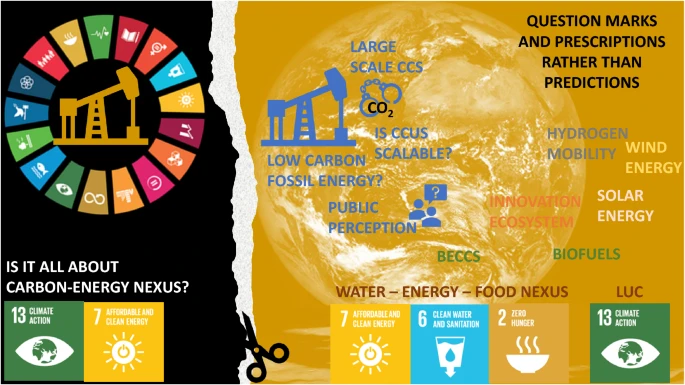Para cumprir as metas globais de redução de emissões de carbono, são observados avanços em eletrificação, que intensificam a demanda de energia, que, por sua vez, deve ser atendida por processo de geração de baixo carbono e sustentável. Impulsionada por políticas públicas e conscientização social, a transição energética busca múltiplas fontes de energia renovável, para redução de emissões de CO2 e termelétricas a gás natural para segurança energética, com captura, armazenamento e utilização de carbono (CCS e CCU). Resultados em gestão de CO2 publicados em periódicos internacionais de co-autoria de Ofélia Araújo são apresentados a seguir com o link para o texto completo do periódico.
“The energy transition uses many alternatives, which gradually evolve with time, as no silver bullet exists to replace fossil fuels immediately. For example, limiting temperature rise to 1.5 °C speeds up transition and intensifies side effects. EIA estimates that moving the net-zero goal from 2070 to 2050 would require 50% more CCUS deployment“.
“The review identifies technological gaps and drivers of innovation in the CCS chain. In the context of offshore natural gas processing, this work reports a recent and massive technological niche for commercial use of membrane-based processes“.
“Anticipating technology costs and carbon price escalations determines when and whether to adopt CCS. CO2 transport costs do not limit penetration of CCS, but impact site choice. CO2 pipeline hubs are a key support to this decision, as shared transport network reduces CCS costs”. “(…) as CCS is not a short-term option (presently too costly with a too-low carbon price), emissions reduction in energy will mainly depend on energy efficiency improvements, needed before CO2 capture retrofit can be contemplated.”
“Chemical absorption holds the lowest carbon dioxide emission per ton of injected carbon dioxide (0.15 t/t), seconded by membrane permeation (0.19 t/t). Hybrid membrane and chemical absorption inherit the small footprint of membrane permeation and, despite its highest life-cycle cost, is recommended for flexibility reasons due to increasing carbon dioxide content in the reservoir lifetime in cases of ultra-deepwater fields with high gas to oil ratio, high carbon dioxide content and early carbon dioxide enhanced oil recovery”.
“Albeit less effective than MP, SS CO2 removal is a noticeable option that produces fuel gas for power generation with %CO2 ≈ 20% as required by new turbo-shafts. Moreover, CO2 is withdrawn from SS as a pumpable liquid allowing a cut of 44% in the power demand for CO2 separation and injection as EOR agent”.
“The photobioreactor is responsible for one-fifth of the biorefinery capital expenditure, with a footprint of about 1000 ha, posing the most significant barrier for the technical and economic feasibility of the proposed biorefinery. The Biorefinery and Carbon Capture and Storage routes show carbon dioxide capture efficiency of 73% and 48%, respectively, with a capture cost of $139/t and $304/t. Additionally, the biorefinery has superior performance in all evaluated metrics of environmental impacts.”





